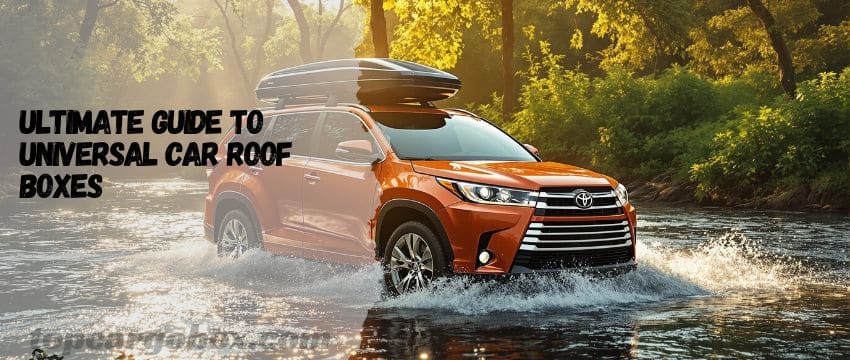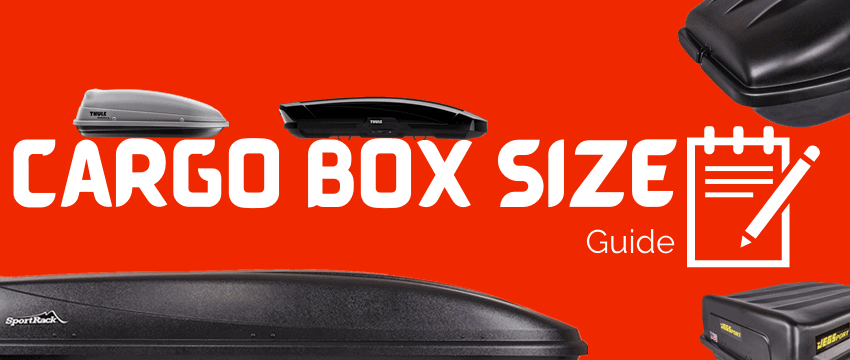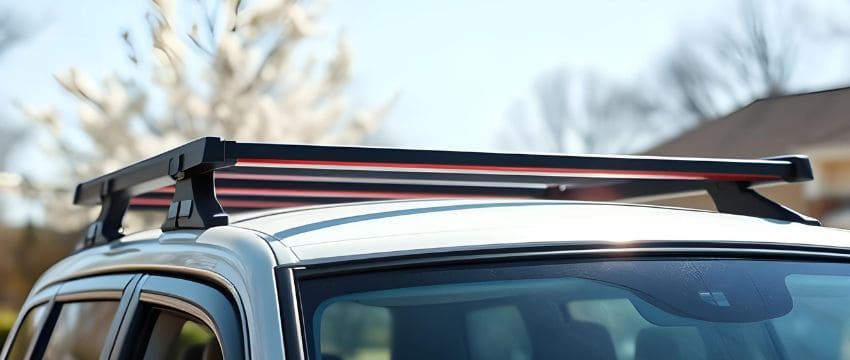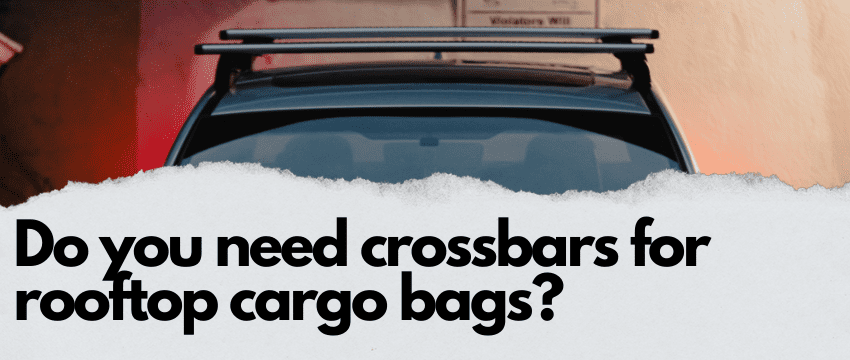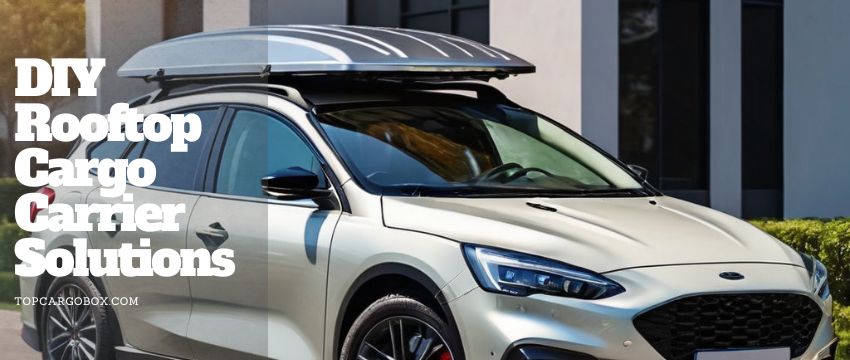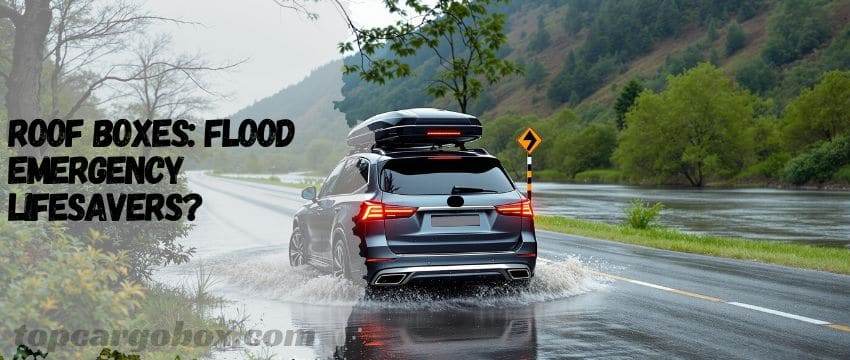What’s up? Ever packed your car for a weekend getaway only to realize halfway through that nothing fits? How’s it going when you’re knee-deep in duffel bags, coolers, and that tent you swore would fit? For real, we’ve all been there—cramming gear like it’s a game of Jenga, only to lose every time. Enter the universal car roof box: your new road-trip sidekick. Picture tossing bulky stuff like skis, strollers, or that massive family-sized grill up top, leaving your backseat free for snacks, legs, and breathing room. But hold up—what exactly makes a roof box “universal,” and how do you even start shopping for one? Let’s hang out and unpack this.
Ever feel like your car’s trunk has a secret vendetta against space? A universal roof box isn’t just some plastic clunker—it’s a game-changer. These things hold up to 18 cubic feet of gear (that’s like six suitcases or a small mountain of camping chairs) and clamp onto nearly any roof rack. Rain? Snow? Highway winds? No big deal—they’re built tougher than your Aunt Linda’s lasagna recipe. And forget fiddling with bungee cords and tarps; these boxes lock tight, keeping your gear dry and thieves guessing. Legit question: Why waste time stressing over storage when you could be vibing to road-trip playlists instead?
Here’s the kicker: Not all roof boxes are created equal. Some are sleek and low-profile, slicing through wind like a hot knife, while others are bulkier but fit enough gear for a cross-country move. Off the top of my head, you’ll want one that’s easy to install—nobody wants to grunt for an hour with an Allen wrench. Look for models that open from both sides (because crawling over your car like a raccoon sucks). Oh, and check weight limits—most handle around 150 pounds, but your car’s roof might have its own rules. Fair enough, right? What if there was a smarter way to skip the packing panic and just… go?

What Is a Universal Car Roof Box?
The Basics You Need to Know
Imagine slapping a storage box on your car’s roof that’s basically the superhero of road trips—no fancy engineering degree required. A universal roof box isn’t some niche gadget; it’s built to clamp onto nearly any car, SUV, or crossover as long as you’ve got roof rails or crossbars. Think of it like that friend who’s down for anything: skis, camping gear, grandma’s antique dresser—you name it. For real, why stress about upgrading to a bigger ride when you can just bolt on extra space?
These boxes aren’t one-size-fits-all, but they’re close. Off the top of my head, they pack 12 to 22 cubic feet of room—enough for 4 to 6 suitcases, a week’s worth of camping gear, or that giant inflatable kayak you swore you’d use. They’re crafted from tough-as-nails ABS plastic or glossy fiberglass, so rainstorms and highway speeds don’t stand a chance. No big deal, right? And yeah, most come with locks, because leaving your gear up there like a buffet for sticky fingers sucks. Legit question: Who wants to play luggage Tetris when you could just… not?
Here’s the kicker: These boxes aren’t just dumb bins. They’re designed to stay put at 70+ mph, and the good ones slice through wind like butter. Fair enough, you might grunt a little during installation, but once it’s clamped down, you’re golden. What if there was a smarter way to ditch the clutter without turning your car into a clown car? Spoiler: There is. Throw in the fact that they’re weatherproof and thief-resistant, and suddenly that road trip feels less like a survival challenge. Nice try, trunk space—you’ve been upgraded.
Why You Actually Need a Roof Box
Say Goodbye to “Tetris” Packing
How’s it going when you’re shoving that last duffel bag into your trunk, only to realize your hiking boots are now crushing your laptop? Sucks, right? A roof box isn’t just a glorified shelf—it’s your ticket to tossing bulky junk like tents, skis, or strollers up top. Imagine road trips where you’re not wrestling coolers for legroom or playing “what’s that smell?” with muddy gear. That’s awesome, and honestly, way less stressful than pretending your sedan is a moving van.
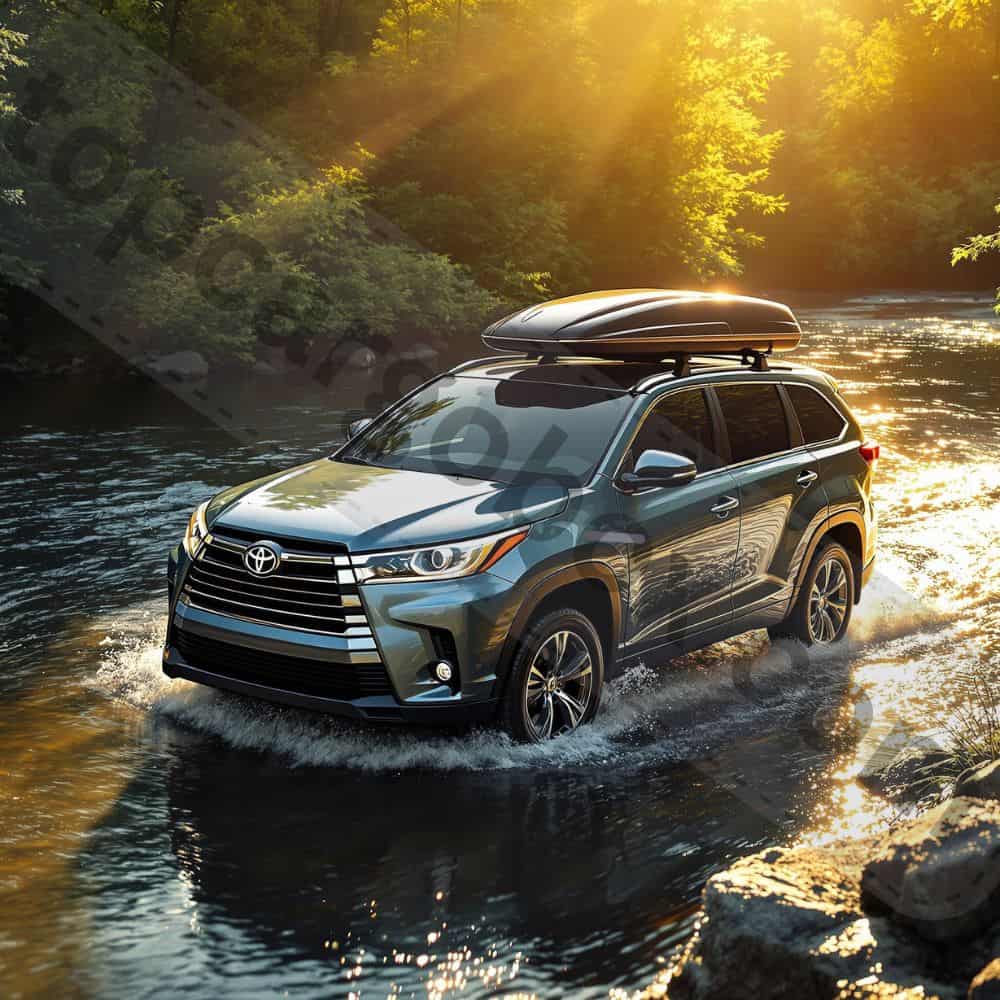
Ever tried keeping your gear dry with a flimsy tarp? Roof boxes laugh at rain, snow, and rogue puddles. They’re weatherproof fortresses, locking down your stuff so you don’t show up to the campsite looking like you fought a mud monster. No big deal if your boots are caked in dirt—they’re not sharing space with your work laptop anymore. For real, who wants to dig through a chaotic pile when you could just… grab and go?
Here’s the kicker: These boxes aren’t just functional—they’re smart. Instead of strapping down a jumbled heap that screams “rob me,” you get a sleek, secure pod that holds up to 150 pounds of gear. Off the top of my head, that’s like three bikes or a week’s worth of camping supplies. Fair enough, installing one might take a grunt or two, but once it’s up there, you’re free to binge-watch road trip vibes instead of stress. What if there was a smarter way to keep your car from feeling like a junk drawer? Spoiler: There is.
Key Features to Look For
It’s Not Just a Plastic Box
Not all roof boxes are created equal. Look for aerodynamic designs (so you’re not guzzling gas), easy-install systems (nobody wants to grunt for hours), and dual-side opening for loading from either side of the car. Check weight limits too—most handle 100-165 pounds.
Security matters. Models like the Thule Motion XT have built-in locks and tamper-proof latches. And hey, if you’re into sleek looks, the Yakima CBX blends style with function. Pro tip: Low-profile boxes reduce wind noise. Your ears will thank you.
How to Choose the Right Size
Bigger Isn’t Always Better
A roof box that’s too large can block your sunroof or rearview mirror. Come on, that’s just annoying. Measure your roof’s usable space first. For small sedans, a 14-16 cubic foot box like the SportRack Horizon works. SUVs? Go big with 18-22 cubic feet.
But remember: Overloading strains your roof rails. Stick to the weight limit, and balance heavy items near the center. Fair enough?
Installation Made Stupid Simple
No Engineering Degree Required
Most universal boxes clamp onto crossbars in minutes. Tools? Usually just a screwdriver or Allen wrench. The Yakima RocketBox Pro even has a quick-release system. Feeling under the weather? Grab a buddy to help hoist it up.
Test drive it around the block first. If it wobbles or whistles, adjust the clamps. No worries—it’s a fixable problem.
Maintenance Tips to Keep It Fresh
Because Dust Happens
Wipe down the box with mild soap and water after trips. Check latches and seals yearly—cracked rubber means leaks. Store it indoors if possible; UV rays can fade plastic. Old school hack? Rub a silicone lubricant on hinges to prevent squeaks.
Top Brands Worth Your Cash
Who’s Killing the Game?
Thule and Yakima dominate, but don’t sleep on SportRack or Inno. Thule’s Motion 3 is a crowd favorite for durability, while Yakima’s CBX series nails aerodynamics. Budget pick? SportRack delivers without breaking the bank.
Safety: Don’t Skip This Part
Secure It or Regret It
Always double-check clamps and weight limits. Exceeding 165 pounds risks damaging your roof or losing cargo mid-drive. Distribute weight evenly, and avoid sharp turns at high speeds. You good? Safety first, speed second.
Cost vs. Value: What’s the Sweet Spot?
Spoiler: You Get What You Pay For
Basic boxes start around $300, while premium models hit $1,200. But a mid-range pick like the Thule Motion 3 balances cost and features. Think long-term: A quality box lasts 10+ years. Totally worth it.
Wrapping It Up
A universal roof box is a game-changer for road warriors. It’s practical, secure, and saves your sanity. Ready to pick one? Check out this comparison of top models to find your match. Catch you later—happy travels!
Can Any Roof Box Fit on Any Car?
Nah, not exactly. Universal boxes work with most cars if you have crossbars or roof rails. Cars without rails need aftermarket racks. Always check your vehicle’s weight limit and roof shape. Sedans and SUVs usually handle boxes fine, but tiny cars might struggle. Pro tip: Consult your car’s manual first.
Are Car Roof Boxes Universal?
Most are designed for broad compatibility, but it’s a long shot to call them one-size-fits-all. Check dimensions, weight limits, and clamp styles. Brands like Thule and Yakima offer fit guides online. When in doubt, ask a pro.
Do Universal Roof Bars Fit Any Car?
Not a big deal—most do! Universal bars adjust to fit different widths. But low-profile cars or trucks might need specific kits. Brands like Rhino Rack sell adapters for tricky setups.
How Much MPG Do You Lose With a Roof Box?
Around 10-25%, depending on box size and speed. Aerodynamic boxes like the Yakima CBX minimize drag. Driving at 65 mph instead of 75 helps too. Bummer, but worth the trade-off for extra space.
How Fast Can You Drive With a Roof Box?
Most manufacturers cap it at 80 mph. Faster speeds risk damaging the box or your car. High winds? Slow down to avoid wobbling. Play it safe—your cargo isn’t worth a ticket.
Who Makes the Best Roof Boxes?
Thule and Yakima lead the pack for durability and innovation. SportRack is great for budget shoppers. Check out this showdown for details. Dude, you can’t go wrong with either!
Table: Universal Roof Box Features at a Glance
| Feature | Details |
|---|---|
| Capacity | 12–22 cubic feet (fits 4-6 suitcases) |
| Material | ABS plastic (lightweight) or fiberglass (premium) |
| Weight Limit | 100–165 lbs—check your car’s roof capacity! |
| Aerodynamics | Low-profile designs reduce wind noise and drag |
| Security | Integrated locks, tamper-proof latches |
| Compatibility | Fits most crossbars; requires roof rails or aftermarket racks |
That’s a wrap! Got questions? Hit me up. Time to hit the road—take it easy! 🚗✨
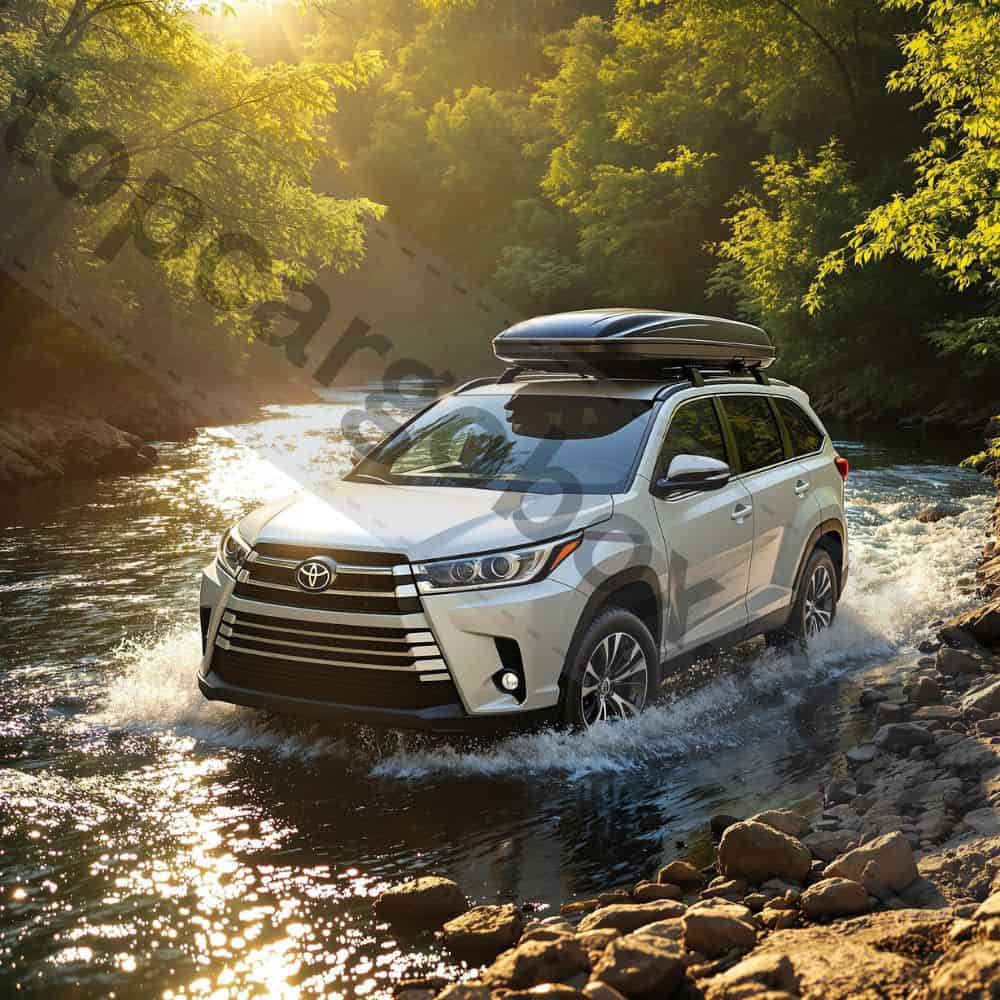
Recommend Reading:
1. Subaru Outback Rooftop Carriers
How’s it going when your Subaru Outback’s trunk still isn’t enough for all your adventure gear? No big deal—rooftop carriers are like a cheat code for extra space, adding a whopping 18 cubic feet (think six suitcases or a small kayak) without messing up your ride’s rugged vibe. These boxes aren’t clunky add-ons; they’re sleek, low-profile, and won’t block your moonroof views. For real, who wants to sacrifice stargazing just to haul firewood or ski gear? Plus, they’re built with heavy-duty clamps that laugh at potholes and dirt roads.
Ever tried stuffing a tent, coolers, and hiking boots into your Outback only to play “what’s that smell?” A rooftop carrier dumps all that chaos up top, freeing your cabin for legroom, snacks, and actual humans. They’re weatherproof, lockable, and tougher than your last hiking boots—rain or shine, your gear stays dry and safe. Off the top of my head, models like the Thule Motion XT blend right in with the Outback’s adventure-ready look. Fair enough, installation takes a grunt or two, but once it’s clamped down, you’re set for every spontaneous trip.
What if there was a smarter way to stop rearranging your trunk like a Jenga master? Spoiler: There is. These carriers hold 150+ pounds of gear, so you can toss in bikes, camping chairs, or even that inflatable paddleboard you’ll totally use this summer. And hey, if you’re into specifics, our Subaru Outback rooftop carriers guide breaks down the best picks. Legit—why stress about space when you could be vibing to road-trip playlists instead?
2. Toyota Highlander Roof Boxes
Family road trips in a Toyota Highlander? Say goodbye to backseat chaos. Roof boxes for the Highlander prioritize space without sacrificing style, offering 16–20 cubic feet of cargo room for strollers, coolers, or sports gear. Look for models with dual-side access to simplify loading, and don’t forget to check weight limits—most Highlanders can handle 150+ pounds on the roof. Need recommendations? We’ve rounded up the top 5 roof boxes for Toyota Highlander owners.
3. Golf Cart Cargo Boxes
Who says golf carts are just for the fairway? Golf cart cargo boxes turn your cart into a utility workhorse, perfect for hauling tools, gardening supplies, or tailgating gear. These boxes are typically lightweight (under 50 pounds) and weatherproof, with clamp-on designs that won’t scratch your cart’s frame. For golfers who love multitasking, our list of 12 golf cart cargo boxes covers everything from compact bins to heavy-duty haulers.
4. Subaru Crosstrek Roof Box Options
Subaru Crosstrek drivers live for spontaneity—roof boxes let you pack for it. Models tailored for the Crosstrek balance aerodynamics and capacity, with 12–16 cubic feet of space ideal for rooftop tents, kayaks, or ski gear. Many feature scratch-resistant finishes to match the Crosstrek’s adventurous vibe. For a curated list of options, our Subaru Crosstrek cargo box breakdown has you covered.
5. Toyota RAV4 Cargo Carriers
The Toyota RAV4 is a crossover queen, and roof carriers amplify its versatility. Slim, aerodynamic boxes like the Thule Motion XT pair perfectly with the RAV4’s roof rails, adding storage without killing your MPG. Need something rugged for camping? Hard-shell carriers with 150-pound limits handle bulky gear like a pro. Dive into our 3 best cargo carriers for Toyota RAV4 for top picks.
6. Honda Odyssey Cargo Box Guide
Minivan life doesn’t mean sacrificing style—or storage. Roof boxes for the Honda Odyssey offer up to 22 cubic feet of space, ideal for road trips with kids, sports gear, or holiday luggage. Look for models with integrated locks to keep your stuff secure during pit stops. Our Honda Odyssey cargo box guide breaks down the best fits for this family favorite.
7. Storing Your Car Roof Box
Storing a roof box isn’t rocket science, but doing it wrong can lead to cracks or warping. Always clean it with mild soap, dry thoroughly, and store it indoors if possible. For garages with limited space, disassemble the box and stack the halves vertically. Need more tips? Our how-to-store guide spills all the secrets.
8. Skinny, Low-Profile Cargo Boxes
Hate wind noise? Low-profile roof boxes slice through air like a knife, reducing drag and keeping your drive quiet. These sleek options, like the Yakima RocketBox Pro, are perfect for sedans or cars with low clearance. Most offer 12–14 cubic feet of space—enough for weekend gear without the bulk. Explore our skinny cargo box roundup for minimalist picks.
9. Open Roof Boxes Without Keys
Lost your keys? No sweat. Open roof boxes without locks are ideal for quick-access items like camping chairs or beach gear. These are lighter (around 30–40 pounds) and often cheaper, but skip them if security’s a priority. For a closer look at key-free options, our open cargo box guide has the details.
10. Aerodynamic Rooftop Cargo Boxes
Speed demons, rejoice! Aerodynamic boxes like the Yakima CBX cut wind resistance, saving you up to 15% on highway MPG. Their curved designs also reduce noise, making long drives less exhausting. For a full breakdown of speed-friendly models, check out our aerodynamic cargo box list.
Our team is creating outdoor-gear relevant articles with passion. If our articles can help you to find the correct solutions for your questions, we will be happy about that. In the content creation process, we usually collect accurate and useful information online or offline to compile our content in an organized way. Consequently, we can guarantee that you can discover some expected answers to your questions. We appreciate your time on our site.

